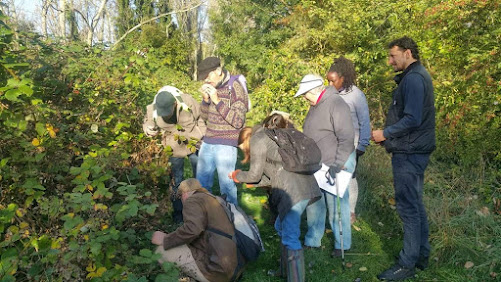AMAS WILD FOOD WALKS by J A J RICHARDSON
An Introduction to Wild Food Walks on the Aylestone Meadows Nature Reserve:
Wild Food is FREE
Foraging for Wild Food reconnects us with Nature
...and our shared Aboriginal Ancestors
Wild Foodstuffs contain more nutrition than cultivated
crops
..and are a direct source of Food, Fibre, &
Medicine
IDENTIFICATION
Latin names often tell us more about a species than
Common names
The Linnaeus system lists plants as Genus, species,
and 'cultivar'
A pocketbook Field Guide can be helpful to identify
new plants
Discovering new trees and plants should be exciting
and fun
Knowing a few plants helps us identify the plants we
are yet to meet
Today we will focus on x12 everyday plants and trees
ETHNOBOTANY
Ethnobotany explores the relationship between people
and plants
Wood Lore is ancient Knowledge
Bush Craft is ancient Practise
Find balance and the plants will slowly start to
reveal their secrets
Never think “How can I 'use' this plant?” [Frank Cook]
Remember that everything in the forest knows that we
are here
FORAGING RULES
We only Take what we Need !
We NEVER eat anything we cannot identify !!
We always leave 50% for Nature (and others) to find
!!!
Aim to “Take Memories and Leave Footprints” [Ray
Mears] !!!!
Please be free to ask any questions at any-time
List of Species:
Latin name Common name
Artium minus - Lesser burdock
Armoracia rusticana -
Horse-radish
Betula pendulum - Silver birch
Crataegus monogyna - Hawthorn
Malus sylvestris - Crab apple
Quercus petraea - Sessile oak
Picea abies - Norway spruce
Rosa canina - Dog rose
Rubus fruticosus - Bramble
Sambucus nigra - Elder
Salix alba - White willow
Taraxacum officinale - Dandelion
Urtica dioica - Stinging nettle




Comments
Post a Comment